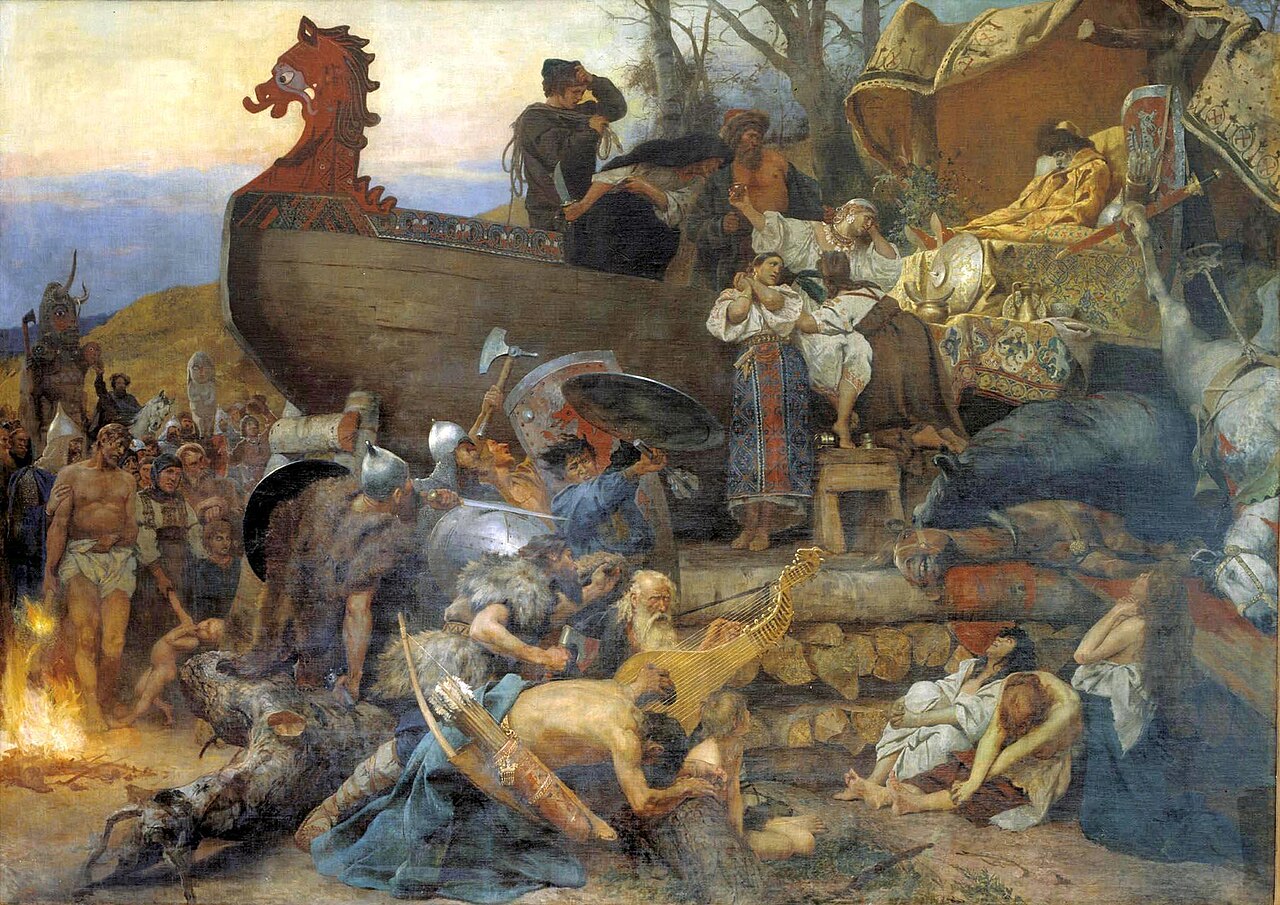Viking Funerals
Ceremonial and burial method of the Northern people

The funeral ship of the Viking Chief Igor the Old, painting by Heinrich Semiradzki - Wikimedia
In Viking tradition, the deceased was placed on a specially prepared "burial ship" for the funeral ceremony. Inside, all the belongings they had in life were arranged according to their social status (count, warrior, king, etc.); these could even include slaves, who were killed to prevent them from returning to haunt their masters, and then offered as sacrifices to the gods. Once the funerary goods were placed around the corpse—dressed in their finest garments and holding their weapons—the ship was set adrift in the frigid waters of the fjord before being set ablaze with flaming arrows.
In some cases, if the funeral took place inland, the ships were burned but then covered with stones to form a burial mound. A well-known example is the Lindholm Høje burial site in Denmark, which contains more than 700 Viking graves. This type of funeral was considered a great honor and ensured that the deceased could enter Valhalla—provided they were buried correctly. Otherwise, they would be doomed to wander as spirits for eternity.
In addition to the deceased’s possessions (which is why their heirs only inherited what they could later conquer themselves), the burial ship was also filled with gifts that reflected their social status. These funerary goods were called Haugfé (haugr: mound, fé: wealth, in Icelandic) and could include swords, axes, chainmail, horns, and even common objects like nails. The most extravagant burial ship discovered to date is the Oseberg ship, believed to hold the remains of a king or a princess.
When the funeral pyre was ignited, it was positioned so that the flames would rise as high as possible into the sky, symbolically carrying the deceased to Valhalla to stand before the god Odin. At the end of the funeral procession, in contrast to Christian and European traditions, a grand feast was held to celebrate the life and achievements of the departed—who had now ascended to the halls of the gods. This funeral practice highlighted a different perception of death: not as an end to be feared, but as a natural stage in one’s journey.
Neil Price, I Vichinghi, Mondadori, 2022
2025-09-19
Salvatore Ciccarello
